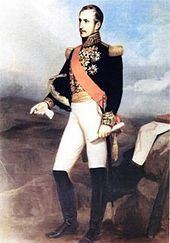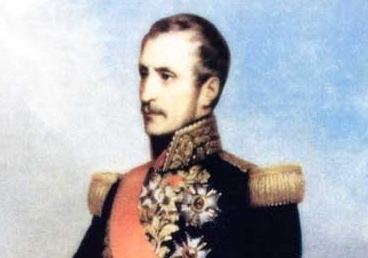Name Simon Bernard | Education Ecole Polytechnique | |
 | ||
Died November 5, 1839, Paris, France | ||
Simon bernard pr sentation
Baron Simon Bernard (28 April 1779 – 5 November 1839) was a French general of engineers. Born in Dole, Simon Bernard was educated at the École polytechnique, graduating as second in the promotion of 1799 and entered the army in the corps of engineers.
Contents
- Simon bernard pr sentation
- Simon bernard magie film 1
- French military service
- Banished from France
- Return to France
- References

Simon bernard magie film 1
French military service
He rose rapidly, becoming a captain in 1800 and a major in 1809. After being involved in the works to the Port of Antwerp, Bernard served (1809–1812) as aide-de-camp to Napoléon. Promoted to colonel in 1813, he was wounded in the retreat after the battle of Leipzig and distinguished himself the same year (1813) in the gallant three month defense of the besieged city of Torgau against the allies.
After Napoléon's first abdication he rallied to the Bourbons and was promoted to general de brigade by Louis XVIII of France and made a knight of Saint Louis. Bernard was tasked by the minister of war Clarke with topographical work. After Napoléon's return from Elba, Bernard rallied to the emperor and took part in the battle of Waterloo in 1815.
Banished from France
After the emperor's second abdication he was banished from France and, refusing an offer for employment from czar Alexander I of Russia, he emigrated to the United States, where, being made an assistant engineer with the rank and pay of a brigadier-general of engineers on November 16, 1816. He designed a number of extensive forts for the Army, notably Fort Monroe and Fort Wool in Virginia, Fort Adams in Newport, RI, Fort Morgan in Alabama, and around New York, and did a large amount of the civil engineering connected with the Chesapeake and Ohio Canal and the Delaware Breakwater.
He was appointed to the Board of Engineers, along with then Major Joseph G. Totten. Bernard and Totten made and extensive tour of the east coast and made a detailed report of their findings and recommendations to Congress in 1821. This report became the basis for all American coastal fortification built before the American Civil War. The forts built as a result of the recommendations of this report are commonly referred to as Third System fortifications.
During his time in America, he was a member of the prestigious Columbian Institute for the Promotion of Arts and Sciences, which counted among its members presidents Andrew Jackson and John Quincy Adams and many prominent men of the day, including well-known representatives of the military, government service, medical and other professions. He resigned from the Army on July 10, 1831.
Return to France
He returned to France after the July Revolution of 1830 and he was made a lieutenant-général by Louis Philippe I of France. He was named to the general committee on fortifications and was tasked with drafting the plans to improve the fortifications of Paris. He was made a peer of France in 1834. He served twice as minister of war. In 1834 he held the post for eight days (10–18 November) and again from September 1836 to March 1839 under Louis-Mathieu Molé.
General Bernard died in November 1839.
